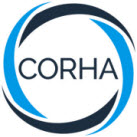Resources and Products
Explore topics by clicking on one of the bubbles below.
- Bloodborne Pathogens
- Burkholderia cepacia
- Candida auris (C.auris)
- Carbapenem-Resistant Enterobacterales (CRE)
- Clostridioides difficile (C.diff)
- COVID-19
- Data Management
- Dialysis Settings
- Drug Diversion
- Ebola
- Environmental Fungi (Molds)
- Epidemic Keratoconjunctivitis (EKC)
- Group A Streptococcus (GAS)
- Influenza
- Injections
- Legionella
- Measles
- Medical Products
- Mpox
- Nontuberculous Mycobacteria (NTM)
- Norovirus
- Patient Notification
- Scabies
- Spotlight Series
- Toolkits
- Viral Hepatitis
- Water Associated Organisms
Candida auris (C.auris)
Candida auris (C. auris) is an emerging multidrug-resistant yeast that can cause invasive infections associated with high mortality. It can be difficult to identify with standard laboratory methods. C. auris can persist on surfaces and medical equipment, spread between patients, and lead to outbreaks in healthcare settings.
Risk of infection or colonization with C. auris is greatest among persons: a) with extensive healthcare exposures, especially in long-term care facilities providing ventilator care; b) infected or colonized with another multidrug-resistant organism, especially carbapenemase-producing organisms (CPOs); c) with invasive medical devices such as central venous catheters and with tracheostomy, or gastrostomy tubes.
For investigation and reporting thresholds, as well as an outbreak definition, see the CORHA product featured below.
Featured Resources:
Key resources for preventing and responding to C. auris in healthcare settings include:
- CORHA’s Candida auris: Recommended Practices for Healthcare Outbreak Response includes proposed investigation/reporting thresholds and an outbreak definition for auris.
- CDC’s Infection Prevention and Control for Candida auris outlines the measures to control auris and provides setting specific guidance.
- Detailed information on Screening for Candida auris Colonization is available from the CDC.
- The Environmental Protection Agency’s (EPA) List P provides an interactive table to verify surface disinfectants effective against auris.
Additional Resources:
- C. auris is nationally notifiable with information on how cases are counted, and current cases counts by state available at Tracking Candida auris.
- CDC’s Candida auris Fact Sheets provide information for patients, clinicians, and public health professionals and are available in multiple languages. Topics include general information on auris and how it spreads, actions to prevent spread, testing of patients/residents, and what it means to be colonized with C. auris.
- CDC’s Implementation of Personal Protective Equipment Use in Nursing Homes to Prevent Spread of Multidrug-resistant Organisms provides an alternative to Contact Precautions in nursing homes and clarifies the precautions needed based on the population at risk and the regional prevalence of auris.
- Communication about colonization and infection at transitions of care is essential to preventing further spread of auris. CDC’s Inter-facility Infection Control Transfer Form can be used to ensure the important information is shared with the receiving facility.
Candida Auris: Recommendations for Healthcare Outbreak Response
